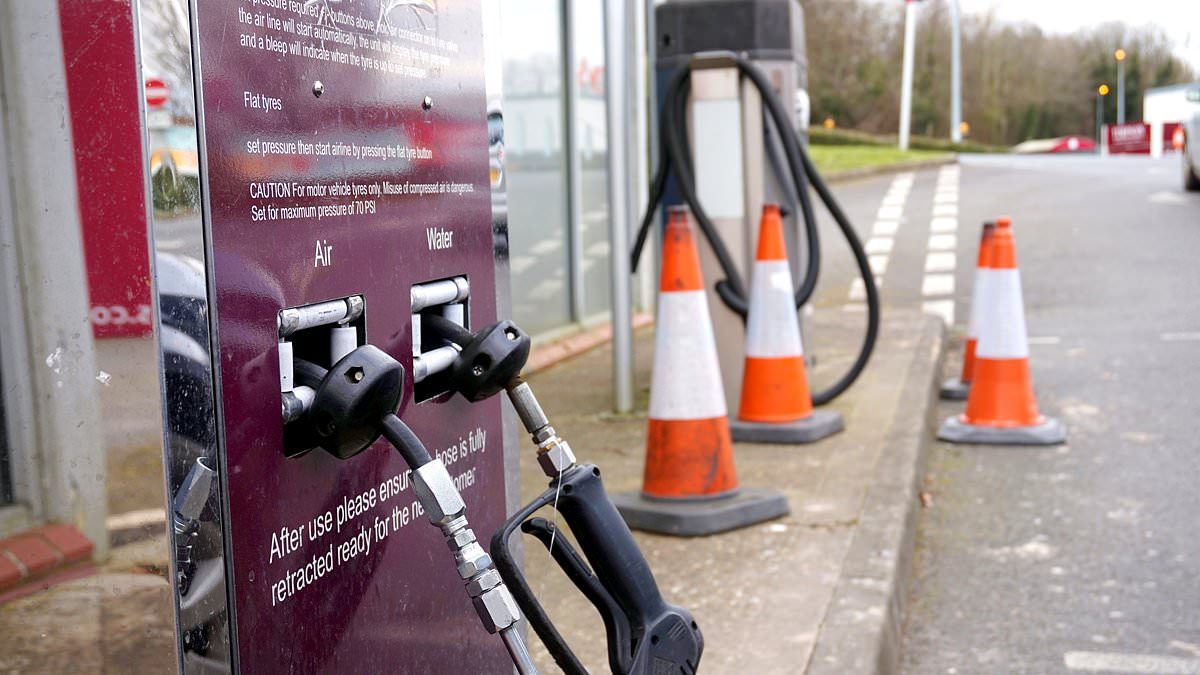Motorists could be throwing away more than one hundred pounds every year by making a very simple mistake with their vehicles.
Not keeping on top of one particular area of car maintenance can have costly ramifications, it has been calculated in a new study.
The job in hand takes just minutes to complete at home or at a fuel station, but can have a major impact on your bank account, according to controlled tests conducted this month.
Driving a car with tyres under-inflated by one bar (14.5psi) is estimated to cost an extra £150 a year in fuel, according to research by What Car?.
That’s enough to pay for 37.5 takeaway coffees at £4 a cup.
Experts who carried out the tests said that while there is a financial hit when it comes to not inflating tyres correctly, there are also ‘major safety implications’ of driving with too little air in just one tyre.
What Car? conducted lab tests of three identical new tyres inflated to different levels to measure the rolling resistance or friction each tyre generated as it rolled along the road.
One tyre was inflated to the recommended 36psi (2.5bar), the second to 22psi (1.5bar) and the third to 51psi (3.5bar).
The under-inflated tyre suffered a 4.5 per cent increase in rolling resistance compared with the correctly inflated one, meaning the car would use an additional £1.50 worth of petrol for every 100 miles driven if four of them were fitted to an Audi A3 1.5 petrol.
Work that up into an annual mileage of 10,000, and it represents an extra £150 on fuel.
How incorrectly inflated tyres impact braking and handling
During further What Car? testing on wet and dry handling tracks, an Audi A3 1.5 petrol fitted with all four tyres under-inflated to 22psi took 1.3 metres longer to come to a halt from 50mph than the same car with four correctly inflated tyres (36psi).
This additional stopping distance means a car is far more likely to crash into another vehicle in front or hit a pedestrian.
The low-pressure tyres also lost grip on a wet road surface 5mph sooner than the correctly inflated tyres.
Handling was also adversely affected when the tyres were under inflated.
In this condition, the test car took a second second longer than the car with correctly inflated tyres completed a circuit of the wet handling track, and 1.8 seconds longer to go round the dry handling track.
The final test conducted highlighted the serious threat to safety posed by having just a single under-inflated tyre – replicating the real-world scenario of having a slow puncture.
With just the rear nearside tyre deflated to 22psi, the car skidded so violently on the wet track that it veered off the road and onto the grass, stopping it from completing a test lap.
What Car? consumer editor, Claire Evans, said the test highlighted the ‘major safety implications’ of driving with too little air in your tyres – and says it should be seen as compelling evidence for why motorists should check tyre pressures regularly.
‘Our main tyre test also highlights the significant difference in the handling and braking abilities of different tyres,’ Claire told us.
‘Poorer performing tyres can take up to three metres longer to stop than the best tyres.
‘And this could be the difference between having a near miss or hitting another vehicle in an emergency situation.’
Although the over-inflated tyre had 1.5 per cent improved rolling resistance than the correctly inflated one, meaning it would use less fuel, there are compelling safety reasons why cars should not be driven with such high tyre pressure too.
